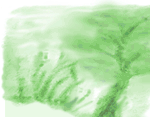



|
|
The following article by Neil Hudson appeared in the Thursday 15 July 2010 edition of Yorkshire Evening Post newspaper If you spot an invasive plant on your land, act quickly. Some non-native plants are considered hazardous waste and it is an offence under the 1981 Wildlife and Countryside Act to dispose of them incorrectly. Contact your local council to find out your nearest controlled waste site. Himalayan balsam (also known as pink peril, poor man's orchid, Indian touch-me-not or ornamental jewelweed), grows 2m tall, prolific along water courses leading to erosion of river banks, produces exploding seed pods in later summer each containing 800 seeds. Japanese knotweed can grow practically anywhere, even on the sides of volcanoes, roots stretch 3m deep and up to 7m away from parent plant, grows 3m tall. Giant hogweed introduced from Asia in the 19th Century, a member of the parsley and carrot family but much bigger, growing up to 5m tall. Its sap is dangerous and can cause severe skin rashes which need hospital treatment. Children should be kept away form giant hogweed. Floating pennywort - another plant introduced by the aquatics industry in the 1980s, which has now spread to numerous canals, rivers and lakes, it grows quickly (up to 20cm a day) and blocks out all light. Australian swamp stonecrop - introduced as an aquatic ornamental plant but can grow on land too, also grows all year round, kills fish by lowering the oxygen content of water and this has been known to cause death in cattle, which mistake it's carpet like covering for solid ground and often drown as a result. For non-native plant species information and projects you can get involved in, including reporting invasive species, please see Food and Environment Research Agency (FERA) web site. |
|
 |